
TARGET 160629
NASA'S DOME OF SILENCE
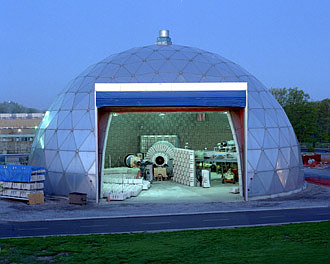
You have probably seen pictures of "anechoic chambers", those chambers with the wedge shaped foam rubber panels which are designed to keep noise out and make the chamber's interior completely silent.
This is a different take on the same theme, but it is designed to keep the sound IN, not out.
Let's face it - NASA deals with rockets and jets. And, rather than test them at thousands of feet in the air, where a failure could be catastrophic, they have to test them first on the ground. But those are very noisy things, and NASA doesn't want to be an annoyingly noisy neighbor, so it has to keep the deafening sounds to itself. So, the "Dome of Silence" that you see in the top picture is a special facility they built for testing jet engines and rocket motors on the ground, without the noises disturbing anyone around.
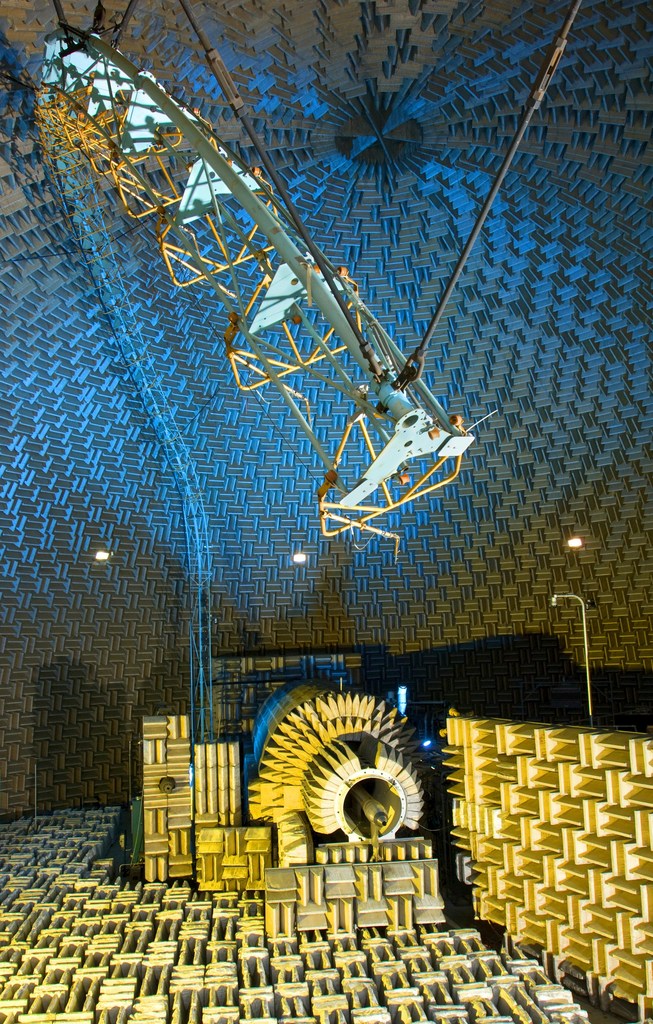
Even the floor is soundproofed.
So NASA built the Aero-Acoustic Propulsion Laboratory (AAPL), where some of the world's most advanced aircraft noise-reduction ideas are developed and tested.
If you've lived or stayed within a mile or so of an airport, you know how there is seemingly no blocking the sound of the massive jet engines, even though the airports have blast walls to block out the sound of the engines starting. The engines in this testing facility are not shielded and the sounds inside the chamber can be so loud as to burst eardrums, even with ear protectors on.
The Aero-Acoustic Propulsion Laboratory’s acoustically designed dome protects residential communities from the laboratory’s high noise levels. Unique in size and appearance, this world-class facility stands 65-feet high and 130-feet in diameter and has 17,000 two-foot-thick fiberglass wedges mounted on its walls and floor. Designed to prevent echoes and reverberations, the wedges give the facility a futuristic, maze-like appearance.
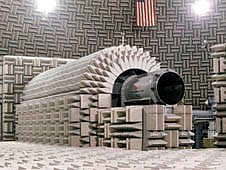
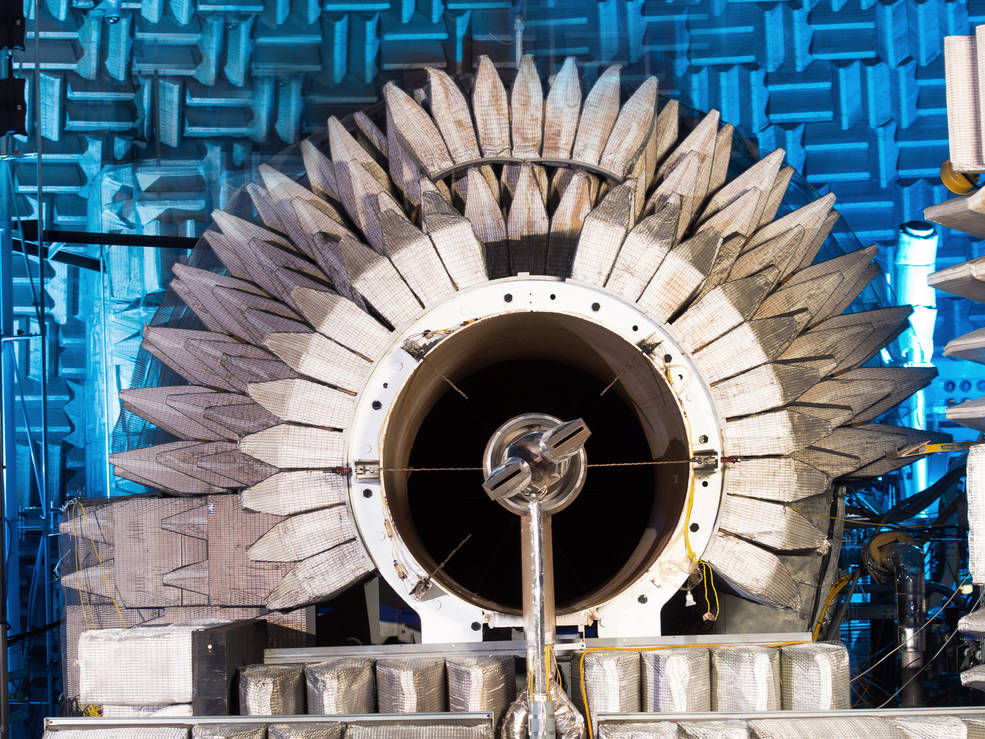
The Nozzle Acoustic Test Rig
The Nozzle Acoustic Test Rig, one of three test rigs in the AAPL, is used to evaluate jet engine nozzle noise at speeds up to 220 miles per hour.
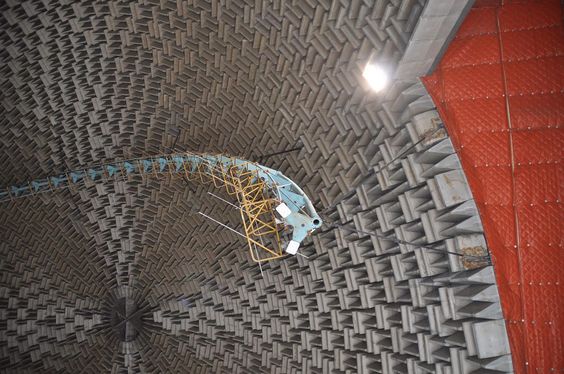
One of the sensor arrays
The sounds can be so loud as to be unhealthy for personnel to be in the chamber when the jets are activated. Located 50 ft from a test model, two fixed microphone arrays (one of which is pictured above) are used to acquire sideline and fly-by acoustic data simultaneously. The data is processed and analyzed in real time during testing, improving data quality while reducing time and costs. AAPL is the largest acoustic facility in the world to feature a far-field measurement arena used for propulsion simulations.
The pictures and information for this week's Target of the Week were provided to the public by NASA. You can take a tour of the facility, but picture taking is otherwise prohibited. If you would like take a tour of the facility while in the Cleveland area, please note that it is best to make advanced registration, as tour groups are limited in size. Access to the Saturday tour program is limited to U.S. citizens and Lawful Permanent Residents ("LPRs"). All adult visitors are required to present government-issued photo identification, and LPRs are required to present their Permanent Resident Card. This includes bus drivers for scheduled groups. NASA reserves the right to limit the use of cameras and cell phones during the tour.
For more information on tour availability, please see the Glenn Research Center information page, here.
To see an excellent video tour of the faciltiy, presented by NASA, click here.FEEDBACK MAP
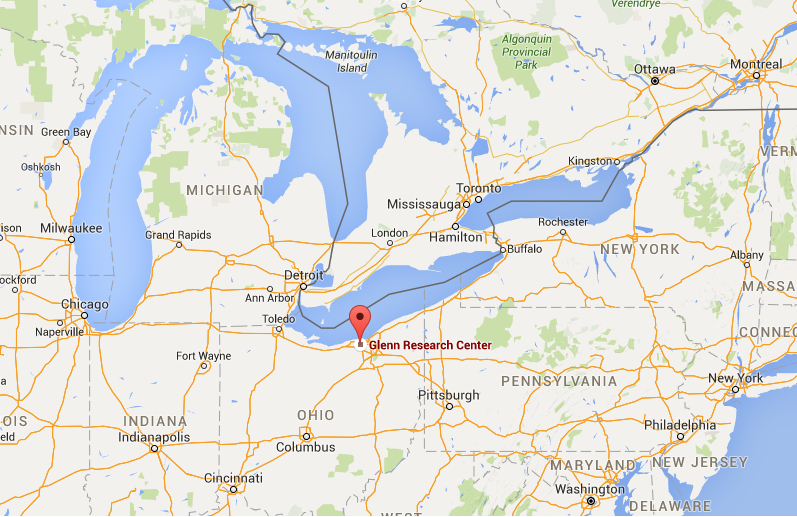
If you got impressions for which this feedback is insufficient, more information,
pictures and videos can be found at the following web sites:
NASA's public information page
Paper detailing all facets of the site (advanced level feedback)
Non-informational 4-minute video of the interior
NASA information on family tours
Many thanks to Teresa Frish for slelecting this target for the Wednesday night free webinars she holds on a monthly basis. We at PSI use the targets she selects on this day so viewers will not wind up getting two different targets with the same set of coordinates. You can sign up for these free webinars at her web page under the option, "Online Classes & Discussions". Videos of all of Teresa's webinars are available on YouTube